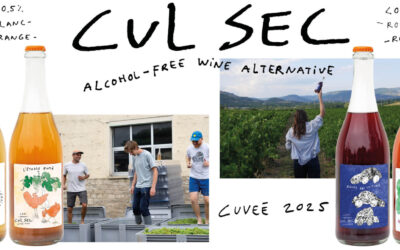What if everything we thought we knew about sustainable winemaking came from the wrong climate? That’s the provocative question at the heart of groundbreaking research happening in Belgium, where scientist and sommelier Vicky Corbeels is challenging the wine industry’s one-size-fits-all approach to sustainability.
The Copy-Paste Problem
For decades, wine regions from Belgium to Denmark have looked south to Bordeaux and other Mediterranean areas for guidance on sustainable practices. It makes sense—these traditional regions have the funding, the research infrastructure, and decades of data. But there’s a critical flaw in this approach: cool climate regions face fundamentally different challenges.
Belgium’s wine industry, now producing an impressive 3.5 million liters annually, operates under completely different conditions than its southern neighbors. Shorter days, higher humidity, intense fungal pressure, and different grape varieties mean that sustainability solutions from warm climates often simply don’t transfer. Worse, EU wine policy is written primarily for Mediterranean climates, potentially setting northern producers up for failure.
The Modern Grape Revolution
Here’s where terminology matters. The wine world has long called disease-resistant grape varieties “hybrids” or “interspecific crosses”—terms that carry an unfortunate stigma, suggesting something inferior or incomplete. Corbeels deliberately uses “modern varieties” instead, and for good reason.
Grapes like Johanniter, Solaris, and Souvignier Gris aren’t compromise choices—they’re purpose-built for cool climate success. Research shows these modern varieties require roughly half the pesticides and half the vineyard interventions of traditional grapes like Riesling or Chardonnay. In some regions, the difference is even more dramatic: ten times fewer pesticides needed compared to conventional varieties.
However, not everything about “sustainable” wine is as green as it seems. Corbeels’ research revealed that some bio-certified producers actually use the most polluting frost protection methods, burning materials in vineyards to prevent frost damage. Certification, she notes, should be a means toward sustainability, not an end in itself—a crucial distinction often lost in marketing.
Research That Matters
Corbeels is pursuing her PhD at the University of Antwerp, focusing specifically on “vitiviniculture”—a term encompassing both viticulture (grape growing) and vinification (winemaking). This matters because these two phases are where cool climate specificity really counts. Packaging and distribution work the same everywhere, but growing grapes and making wine in northern Europe requires completely different approaches.
Her methodology is refreshingly collaborative. Through scenario thinking exercises with 25 Belgian winemakers, she’s mapping out what the industry could look like in 15-30 years. The recurring theme? Increasing adoption of modern grape varieties. A comprehensive life cycle analysis currently underway will identify environmental hotspots and provide data-driven alternatives.
The research faces typical funding challenges, though Corbeels notes growing interest from producers themselves. The wine industry requires enormous upfront investment, and sustainability is often viewed as an additional cost rather than a necessary foundation—a shortsighted approach that will only become more expensive over time.
What This Means for Wine Lovers
For consumers, this research offers a clear message: quality no longer equals age-ability. The outdated notion that great wines must age for decades doesn’t apply to modern cool climate wines. These aren’t wines to cellar for your grandchildren—they’re wines to enjoy now, made with significantly lower environmental impact.
At last year’s Low Countries Wine Festival, 400 consumers discovered the surprising quality of Dutch and Belgian wines, many made from these modern varieties. The openness and enthusiasm were remarkable, particularly toward unfamiliar grape names like Bacchus and Souvignier Gris.
To dive deeper into this fascinating topic, watch the complete conversation with Vicky Corbeels on the VinoVonk Sparks podcast, where she discusses her research journey and vision for sustainable cool climate viticulture:
The Path Forward
Cool climate wine regions stand at a crossroads. They can continue following guidelines written for Mediterranean climates, or they can forge their own path based on rigorous, region-specific research. Belgium and the Netherlands are choosing the latter, potentially positioning themselves as pioneers in truly sustainable viticulture.
The future of northern wine isn’t about catching up to traditional regions—it’s about leapfrogging them entirely. When you reach for a bottle made with modern varieties from a cool climate region, you’re not just trying something new. You’re supporting a fundamental rethinking of what sustainable wine can be.






